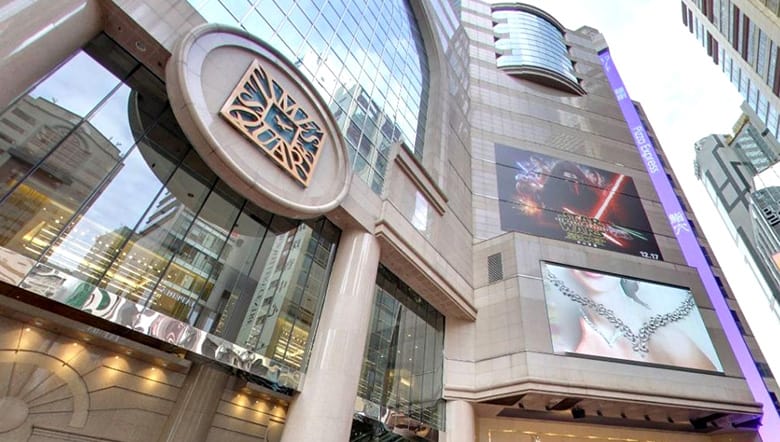
Wharf REIC benefitted from a return to shoppers at its Times Square mall in Causeway Bay
Wharf Real Estate Investment Company recorded a net profit of HK$1.78 billion (US$227.92 million) in the first six months of 2023, a turnaround from a HK$1.53-billion loss a year ago as Hong Kong’s reopening has brought back big-spending tourists.
In a filing with the stock exchange, the real estate firm behind the Harbour City and Times Square shopping centres reported a “modest recovery so far.” Retail sales and hotel revenues posted growth in the first quarter before slowing down in the second quarter compared with results from the same period in 2022, while its office properties remain affected by market conditions.
“Business environment has improved since the borders reopened in January, but post-pandemic recovery is impeded by global geopolitical and economic uncertainties,” the company said. “The post-pandemic recovery is further complicated by mounting cost pressures,” it added. Wharf Real Estate Investment is the investment division of billionaire Peter Woo’s Wheelock & Co, along with sister company The Wharf, which focuses on development.
The company’s revenues increased 4 percent to HK$6.47 billion from HK$6.21 billion year-on-year, with improving hotel revenues helping to compensate for a more than 50 percent increase in finance costs. Revenue from its hotels, which include the Murray in Central and the Marco Polo Hong Kong in Tsim Sha Tsui, nearly doubled to reach HK$697 million from HK$366 million a year earlier.
Momentum Slowed in Q2
Wharf Real Estate’s operating profit from its investment properties improved to HK$4.68 billion during the period from HK$4.42 billion during the same period last year, thanks largely to improving performance from its retail properties, with revenue at its Harbour City mall in Tsim Sha Tsui rising by 9 percent and operating profit jumping 16 percent.

Stephen Ng Tin-hoi, chairman of Wharf REIC (Getty Images)
In Causeway Bay’s Times Square retail revenue grew 6 percent and operating profit improved by 12 percent.
Despite the profit upswing, the company cautioned that retail sales growth slowed to 18 percent in the second quarter from 24 percent in the first three months of 2023.
That tapering in growth is consistent with numbers from Hong Kong’s Census and Statistics Department which show retail sales in the first quarter having increased by 24.1 percent compared to the same period in 2022 to reach HK$103 billion. Growth slowed in the second quarter with retail sales for the first half expanding 20.7 percent over the same period last year to reach HK$205 billion, the city statistics show.
Despite the slowing expansion, the company said its properties has succeeded in attracting “discerning tenants and shoppers.”
The company noted that it refined its tenant base at Harbour City during the pandemic by introducing new concepts while keeping the needs of both tourists and locals in mind. Times Square – home to luxury and aspirational brand stores such as Tiffany & Co., Delsey Paris, and Cartier – was described as “refining its luxury and aspirational brand mix to broaden customer base and solidify competitiveness.”
Harbour City’s retail space was 96 percent occupied at the end of June, while Times Square’s was at 94 percent. In the same period last year, Harbour City and Times Square both stood at 93 percent occupancy. This improvement is in line with overall increased leasing demand, with CBRE noting last month that retail vacancy across Hong Kong fell to 11.6 percent in the first half of the year.
“Retail rent has stabilized but rental improvement is obscured by the amortization of rental concessions granted during the COVID years in accordance with accounting standards,” the company said.
Office Segment Suffers
Meanwhile, Wharf Real Estate noted that its office business remains affected by conditions plaguing the market, including companies shifting to flexible working arrangements following the pandemic.
Harbour City’s office occupancy was at 88 percent at the end of June – up from 87 percent a year earlier. The company said it plans to maximize its tenant base in the face of a challenging market, while noting that Mainland clients in the investment and insurance sectors have expressed interest in the property following the reopening of Hong Kong’s borders.
Meanwhile, Wharf Real Estate’s offices in Times Square’s occupancy rate declined to 87 percent versus the 90 percent occupancy in the same period last year.
Both complexes appear to be outperforming their relevant submarkets in attracting tenants with a report by JLL last month putting Tsimshatsui at an average of 89.3 percent occupancy as of 30 June, while office properties in the Causeway Bay/Wanchai area were seen averaging 90 percent.
“Office market oversupply continues to weigh on rent and occupancy, and the situation is expected to persist until a significant shift in business climate,” Wharf Real Estate said.
JLL also noted that Grade A office rents declined across all submarkets in Hong Kong, except for Tsiumshatsui, where tariffs inched up by 0.3 percent. Meanwhile, Colliers Hong Kong expects at least three million square feet (278,709 square metres) of fresh supply will hit the market by the end of the year, providing tenants with more leasing options.
Leave a Reply